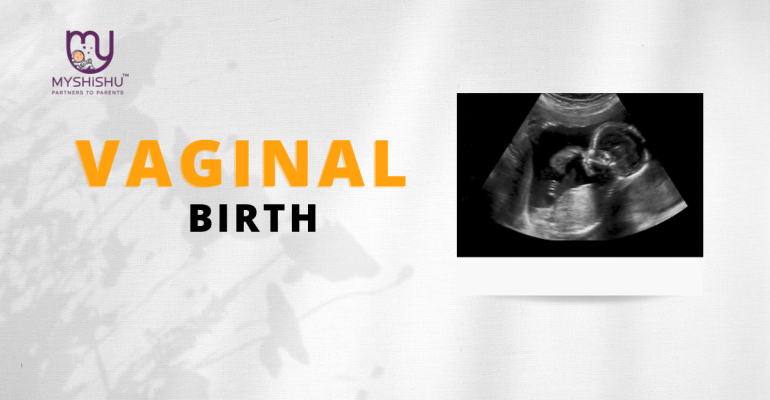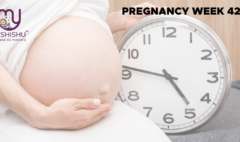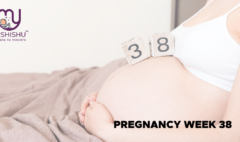Vaginal Birth Delivery: A Wonderful Guide
Vaginal Birth Delivery: A Wonderful Guide
Embarking on the journey of vaginal birth delivery is a profound experience filled with anticipation, challenges, and overwhelming joy. This blog explores the miraculous process of bringing new life into the world through the birth canal. From the benefits of natural childbirth for both mother and baby to the challenges and considerations expectant mothers may face, we delve into the intricacies of this transformative journey. With a focus on preparation, support, and trust in the body’s innate abilities, this blog celebrates the strength, resilience, and beauty of vaginal birth delivery as a testament to the miracle of life.
Introduction
Bringing new life into the world is a journey like no other, and for many expectant mothers, the pathway of vaginal birth delivery is an awe-inspiring testament to the marvels of nature. From the first twinges of labor to the triumphant moment of holding your newborn in your arms, every step of the journey is marked by anticipation, courage, and profound love. In this introductory segment, we embark on a voyage of discovery, delving into the wonders and complexities of vaginal birth delivery. Join us as we explore the essence of this transformative experience, celebrating the strength and resilience of the human body.
What is Vaginal Birth Delivery?
Vaginal birth delivery, also known as natural childbirth, is the process through which a baby is born through the mother’s birth canal. It is a natural and physiological journey that marks the culmination of nine months of pregnancy.
The process typically begins with the onset of labor, as the uterus contracts rhythmically to help push the baby through the cervix and into the world. Vaginal birth delivery is a deeply personal and transformative experience for expectant mothers, often accompanied by a range of emotions, including excitement, apprehension, and joy.
It offers numerous benefits for both mother and baby, promoting bonding and empowerment for the mother while facilitating essential exposure to beneficial bacteria and aiding in lung clearance for the newborn. While vaginal birth delivery is considered the norm, it can present challenges and may require medical interventions in certain situations. Overall, it is a miraculous journey that highlights the strength and resilience of the human body.
How common is Vaginal birth delivery?
Vaginal birth delivery is the most common method of childbirth worldwide, constituting approximately 70–80% of all births. While cesarean section rates vary by region and healthcare practices, vaginal birth remains the preferred and most prevalent mode of delivery for low-risk pregnancies due to its numerous benefits for both mother and baby.
What are the types of vaginal delivery?
- Spontaneous Vaginal Delivery: The natural progression of labor where contractions lead to the baby’s passage through the birth canal.
- Assisted Vaginal Delivery: Involves the use of instruments such as forceps or vacuum extractors to aid in the baby’s delivery when labor progresses slowly or complications arise.
- Water Birth: Giving birth in a tub of warm water, providing pain relief and promoting relaxation during labor.
- Vaginal Birth After Cesarean (VBAC): A vaginal delivery for women who have previously undergone a cesarean section, under certain medical criteria and supervision.
- Natural Unmedicated Birth: Labor and delivery without the use of medical interventions or pain relief medications, relying solely on the body’s natural processes.
What are the stages of a vaginal delivery?
The stages of a vaginal delivery typically unfold in a sequence of progressive steps:
- Early Labor: The initial phase is marked by mild contractions and cervical dilation up to around 3 centimeters. Contractions may be irregular and spaced apart.
- Active labor: is characterized by stronger and more frequent contractions, leading to further cervical dilation (from 4 to 7 centimeters). This stage typically involves increased discomfort and a sense of urgency.
- Transition: The most intense phase of labor, during which the cervix dilates from 8 to 10 centimeters. Contractions are strong, frequent, and may overlap, causing intense pressure and possibly nausea.
- Pushing and Delivery: The final stage is where the mother actively pushes with contractions to help propel the baby through the birth canal. This stage culminates in the birth of the baby, followed by the delivery of the placenta.
Throughout these stages, healthcare providers monitor the progress of labor and provide support and guidance to ensure a safe and successful vaginal delivery.

What are the risks of having vaginal birth delivery?
Vaginal birth delivery is generally considered safe for most women and babies, but like any medical procedure, it carries certain risks and potential complications. Expectant mothers need to be aware of these risks and discuss them with their healthcare providers. Some of the risks associated with vaginal birth delivery include:
- Perineal Tears: During vaginal delivery, the tissue between the vagina and anus (perineum) may tear as the baby’s head passes through. While most tears are minor and heal on their own, severe tears may require stitches and can lead to long-term complications such as pain during intercourse or pelvic floor dysfunction.
- Episiotomy: In some cases, healthcare providers may perform an episiotomy, a surgical incision made in the perineum to widen the vaginal opening and facilitate delivery. While episiotomies were once routine, they are now performed less frequently due to the potential for complications such as an increased risk of perineal tears and long-term discomfort.
- Pelvic Floor Dysfunction: Vaginal birth delivery can weaken the muscles and ligaments of the pelvic floor, leading to conditions such as urinary incontinence, fecal incontinence, and pelvic organ prolapse. These issues may develop immediately after childbirth or manifest later in life.
- Pelvic Organ Prolapse: In severe cases, the pelvic floor muscles and ligaments may become so weakened that pelvic organs such as the bladder, uterus, or rectum protrude into the vagina, causing discomfort and functional problems.
- Uterine Rupture: In women who have had a previous cesarean section or other uterine surgery, there is a small risk of uterine rupture during vaginal birth delivery. This rare but serious complication can result in life-threatening bleeding and may necessitate an emergency cesarean section.
- Infection: Vaginal birth delivery increases the risk of infection for both mother and baby. Maternal infections such as endometritis (infection of the uterine lining) or perineal infections can occur after childbirth, while babies are at risk of infections such as group B streptococcus (GBS) or neonatal herpes.
- Shoulder Dystocia: In some cases, the baby’s shoulder may become stuck behind the mother’s pubic bone during delivery, a condition known as shoulder dystocia. This can lead to complications such as brachial plexus injuries or fractures and may require medical intervention to resolve.
- Fetal Distress: During labor, changes in the baby’s heart rate or oxygen levels may indicate fetal distress, which can occur due to factors such as umbilical cord compression, placental insufficiency, or meconium aspiration. Fetal distress may necessitate interventions such as an emergency cesarean section to ensure the baby’s safety.
It’s essential for expectant mothers to discuss their risk factors and concerns with their healthcare providers and to make informed decisions about their birth plans based on their medical history, preferences, and the recommendations of their healthcare team. Despite the potential risks, many women can have safe and successful vaginal births with proper prenatal care and support during labor and delivery.
Reasons to avoid vaginal delivery
While vaginal birth delivery is often the preferred method for many expectant mothers, there are certain circumstances where avoiding vaginal delivery may be recommended. It’s important to note that these reasons are based on individual medical considerations and should be discussed with a healthcare provider. Here are some reasons why a woman may choose to avoid vaginal delivery:
- Previous Traumatic Birth Experience: Women who have had a previous traumatic vaginal birth experience may opt to avoid vaginal delivery in subsequent pregnancies due to fear, anxiety, or post-traumatic stress disorder (PTSD) related to childbirth.
- Maternal Health Conditions: Certain maternal health conditions, such as severe heart disease, high blood pressure (preeclampsia), active genital herpes infection, or placenta previa (placenta covering the cervix), may increase the risk of complications during vaginal delivery and necessitate alternative delivery methods.
- Fetal Health Concerns: If there are concerns about the baby’s health or well-being, such as fetal growth restriction, certain congenital anomalies, or abnormal fetal positioning (such as breech presentation), healthcare providers may recommend cesarean section delivery to minimize risks to the baby.
- Previous Cesarean Section: Women who have undergone a previous cesarean section delivery may choose to avoid vaginal birth delivery in subsequent pregnancies due to the risk of uterine rupture or other complications associated with vaginal birth after cesarean (VBAC). In some cases, healthcare providers may recommend elective repeat cesarean section delivery.
- Multiple Gestation: Women carrying twins, triplets, or higher-order multiples may be advised to avoid vaginal delivery due to increased risks of complications such as preterm birth, fetal malpresentation, or umbilical cord prolapse.
- Placental Abnormalities: Placental abnormalities such as placenta accreta, where the placenta grows too deeply into the uterine wall, may increase the risk of severe bleeding during vaginal delivery and necessitate cesarean section delivery to minimize maternal morbidity and mortality.
- Maternal Preference: Ultimately, some women may choose to avoid vaginal delivery for personal or cultural reasons, preferring the perceived safety or convenience of cesarean section delivery. Healthcare providers need to respect a woman’s autonomy and support her decision-making process regarding her birth plan.
Expectant mothers need to discuss their circumstances, preferences, and concerns with their healthcare providers to make informed decisions about the most appropriate delivery method for themselves and their babies. While vaginal delivery is often safe and successful, there are situations where alternative delivery methods may be recommended to ensure the best possible outcomes for both mother and baby.
What are the advantages of a vaginal delivery?
Vaginal delivery offers several advantages for both mother and baby, making it the preferred method of childbirth for many women. Here are some of the key benefits of vaginal delivery:
- Faster Recovery: Compared to cesarean section delivery, vaginal delivery typically involves a shorter hospital stay and a faster recovery time. Mothers who deliver vaginally are often able to resume normal activities more quickly, including caring for their newborn and returning to work.
- Reduced Risk of Complications: Vaginal delivery is associated with lower rates of complications such as infection, blood loss, and surgical injury compared to cesarean section delivery. This can lead to better overall outcomes for both mother and baby.
- Bonding and Empowerment: Vaginal delivery allows mothers to actively participate in the birth of their baby, promoting a sense of empowerment and bonding between mother and child. The experience of labor and delivery can be deeply meaningful and transformative for many women, enhancing their confidence and connection with their newborns.
- Beneficial Microbiome Exposure: Babies born vaginally are exposed to beneficial bacteria present in the birth canal, which helps establish a healthy microbiome and strengthens their immune system. This early exposure to maternal microbes may provide long-term health benefits for the baby.
- Improved Respiratory Function: The process of labor and vaginal delivery helps clear fluid from the baby’s lungs, reducing the risk of respiratory complications such as transient tachypnea of the newborn (TTN) or respiratory distress syndrome (RDS). Babies born vaginally are less likely to require interventions such as oxygen therapy or respiratory support.
- Facilitates Breastfeeding: Vaginal delivery is associated with higher rates of successful breastfeeding initiation and establishment compared to cesarean section delivery. The hormonal changes that occur during labor and delivery, as well as the skin-to-skin contact immediately after birth, promote bonding and stimulate milk production.
- Lower Risk of Maternal Mortality: Vaginal delivery is generally considered safer for mothers, with lower rates of maternal morbidity and mortality compared to cesarean section delivery. Avoiding major abdominal surgery reduces the risk of complications such as infection, blood clots, and anesthesia-related issues.
Overall, vaginal delivery offers numerous advantages for both mother and baby, promoting a positive birth experience and optimal outcomes for the entire family. While every birth experience is unique, many women find that vaginal delivery aligns with their preferences and goals for childbirth, allowing them to welcome their newborn into the world with confidence and joy.
Is a vaginal delivery painful?
Vaginal delivery is often associated with pain due to uterine contractions and the stretching of the birth canal during labor. However, pain management options such as epidurals, breathing techniques, and labor support can help alleviate discomfort and promote a more manageable birthing experience for many women.
What side effects can I expect after a vaginal delivery?
- Perineal pain: discomfort or soreness in the perineal area due to stretching or tearing during delivery.
- Vaginal Bleeding: Normal postpartum bleeding is known as lochia, which can last for several weeks after delivery.
- Hemorrhoids: swollen veins in the rectal area, often caused by pushing during delivery.
- Urinary Incontinence: Temporary loss of bladder control due to weakened pelvic floor muscles.
- Episiotomy Healing: If an episiotomy is performed, there may be discomfort or pain at the incision site until it heals.
- Breast Engorgement: swelling and tenderness of the breasts as they fill with milk.
- Postpartum depression: emotional changes, mood swings, and feelings of sadness or anxiety after childbirth.
- Fatigue: physical exhaustion from the demands of labor and caring for a newborn.
- Constipation: Difficulty passing stool due to decreased muscle tone and postpartum medications.
- Changes in Sex Drive: Variations in libido due to hormonal fluctuations and physical changes post-delivery.
How long does it take to heal from vaginal delivery?
The healing process after vaginal delivery varies from woman to woman, but it generally takes several weeks to several months for the body to fully recover. Immediately after delivery, the uterus begins to contract and return to its pre-pregnancy size, a process known as involution. Perineal tears or episiotomies may require stitches, which typically dissolve within a few weeks. Vaginal bleeding, known as lochia, gradually decreases over the first few weeks postpartum. While most women start to feel physically better within a few weeks, it can take longer for the body to fully recover, especially if there are complications during delivery.
How long do you bleed after a vaginal delivery?
After a vaginal delivery, postpartum bleeding, known as lochia, typically lasts for about 4 to 6 weeks. Initially, the bleeding is heavy and may contain blood clots, gradually tapering off to a lighter flow. It’s important to use sanitary pads and monitor for any signs of excessive bleeding or complications.
How long after vaginal delivery can you have sex?
After a vaginal delivery, it’s generally recommended to wait until any perineal tears or episiotomy wounds have healed and postpartum bleeding (lochia) has stopped, usually around 4 to 6 weeks. However, every woman’s body heals differently, so it’s essential to listen to your body and consult with your healthcare provider before resuming sexual activity. Additionally, factors such as fatigue, hormonal changes, and emotional adjustment to parenthood may affect your desire and readiness for intimacy, so communication with your partner is crucial for a positive postpartum experience.
Can you prepare for a vaginal delivery?
Yes, there are several ways to prepare for a vaginal delivery:
- Prenatal Education: Attend childbirth classes to learn about the stages of labor, breathing techniques, and pain management options.
- b: Engage in regular physical activity such as walking, swimming, or prenatal yoga to strengthen your body and promote optimal fetal positioning.
- Healthy Diet: Eat a balanced diet rich in fruits, vegetables, whole grains, and lean proteins to support your overall health and energy levels during labor.
- Birth Plan: Discuss your preferences and wishes for labor and delivery with your healthcare provider, including your desired pain management methods and birthing environment.
- Emotional Support: Surround yourself with a supportive network of family, friends, and healthcare professionals who can offer encouragement and guidance throughout your pregnancy and childbirth journey.
When to seek the health care provider
Seek medical attention if you experience any of the following symptoms after vaginal delivery: heavy bleeding that soaks a pad within an hour, severe abdominal pain or tenderness, fever over 100.4°F (38°C), foul-smelling vaginal discharge, difficulty breathing, chest pain, or signs of postpartum depression such as persistent sadness, anxiety, or difficulty bonding with your baby. Prompt medical evaluation can help ensure timely treatment and optimal recovery.
Additional common questions (FAQs)
-
What are the 3 types of delivery?
Types of delivery include:
– Vaginal delivery.
– Assisted vaginal delivery (vacuum or forceps).
– C-section (Cesarean birth).
– VBAC (vaginal birth after cesarean). -
What are the disadvantages of virginal birth?
Possible disadvantages of vaginal birth
If you have a vaginal birth, you might: need stitches if your vaginal opening is torn or if you have an episiotomy. need forceps or vacuum assistance so your baby can be born. have an increased chance of incontinence or prolapse.
-
What is the safest method of delivery?
Vaginal delivery is safest for the fetus and for the mother when the newborn is full-term at the gestational age of 37 to 42 weeks. Vaginal delivery is preferred considering the morbidity and mortality associated with operative cesarean births has increased over time.
-
Is C-section Painful?
You won’t feel any pain during the C-section, although you may feel sensations like pulling and pressure. Most women are awake and simply numbed from the waist down using regional anesthesia (an epidural and/or a spinal block) during a C-section. That way, they are awake to see and hear their baby being born
-
What is normal delivery time?
Normal labor usually begins within 2 weeks (before or after) the estimated delivery date. In a first pregnancy, labor usually lasts 12 to 18 hours on average; subsequent labor is often shorter, averaging 6 to 8 hours. Management of complications during labor requires additional measures.
Conclusion
Vaginal delivery is a profound and transformative journey that highlights the strength, resilience, and beauty of the human body. While it may present challenges and discomforts, the rewards of bringing new life into the world through the birth canal are immeasurable. By preparing physically, emotionally, and educationally for labor and delivery, women can empower themselves to navigate the birthing process with confidence and grace. With the support of healthcare providers, partners, and loved ones, each woman’s journey of vaginal delivery becomes a unique and awe-inspiring testament to the miracle of childbirth and the power of maternal love.











